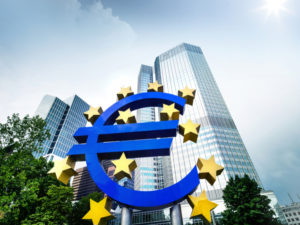
When the ECB instituted a negative rate scheme on banks’ excess reserve in the bloc, the idea was supposed to be the key to successfully kick-starting the economy. Now, nearly five years later, the idea doesn’t look like it’s helping, and it may even be hurting. Tom Fairless reports at The Wall Street Journal:
European Central Bank President Mario Draghi signaled Wednesday that ECB officials are starting to worry about the adverse side effects of negative interest rates, a controversial policy tool introduced by the ECB almost five years ago to encourage European banks to lend.
Speaking at a conference in Frankfurt, Mr. Draghi said the ECB would “continue monitoring how banks can maintain healthy earning conditions while net interest margins are compressed.”
“If necessary, we need to reflect on possible measures that can preserve the favorable implications of negative rates for the economy, while mitigating the side effects, if any,” Mr. Draghi said.
The comments are significant because top ECB officials have previously insisted that negative rates are on balance positive for the region’s economy.
Casting doubt on negative rates could be risky for the ECB if investors interpret it as a sign that the central bank doubts its own strategy.
The comments come three weeks after the ECB responded to Europe’s recent economic slowdown by signaling it won’t raise its key eurozone interest rate, currently set at minus 0.4%, before next year.
Read more here.



